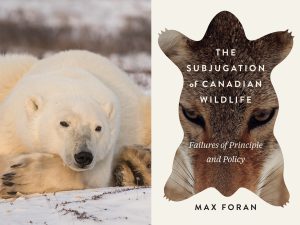On a late July morning in 2020, as the world cycled through a revolving state of lockdowns and pandemic waves , Adrienne White, an ice analyst at the Canadian Ice Service, sat down at her desk and pulled up the most recent satellite imagery of Milne Fiord, Umingmak Nuna (Ellesmere Island), Nunavut. Despite some cloud cover over the ice shelf, she could see something wasn’t right — an unusual dark shape. As better imagery came in, White realized the dark shape was open water. The nearly 200-square-kilometre Milne Ice Shelf had collapsed, losing 40 per cent of its area almost overnight.
Floating in the open Arctic water was a 79-square-kilometre ice island roughly 50 per cent larger than Manhattan and 70 to 80 metres high. Despite White’s initial shock, the conditions were right. That July turned out to be tied for the hottest on record (only to be surpassed by 2021, and, more recently, 2023) , and even from satellite imagery in the weeks before, she could see dark spots on the ice surface that indicated melt.
Weeks earlier, White had noticed a patch of open water along the northwest coast of Ellesmere, which, in the past, would have been ice. “Over the past decade,” she says, “we’re starting to see open water appear during the summer, and with that, we’ve had these large calving events.”
News of the collapse spread quickly, with many headlines mentioning “Canada’s last intact ice shelf.” For seasoned Carleton University glaciologist Derek Mueller, who had visited Milne 11 times between 2004 and 2019, this wasn’t exactly the case. The shelf had been fracturing for years.“I’ve spent basically the last 14 years or so studying Milne Fiord, waiting, actually, in a sense, for this event to happen.”
For Mueller and his colleagues, Milne Fiord has become a natural laboratory of sorts, a last-of-its-kind place to document and make sense of a rapidly changing Arctic ecosystem. Although that knowledge can’t turn back the clock of climate change, it can help scientists better understand how that climate will continue to change both in the Arctic and beyond.
“From a scientific perspective, there’s that sort of curiosity and excitement when these things happen,” says Mueller. “But, at the same time, it does change the landscape, and in this case, it’s because of that ‘one-way trip’ that I do get a sort of a sinking feeling in my gut.”




















